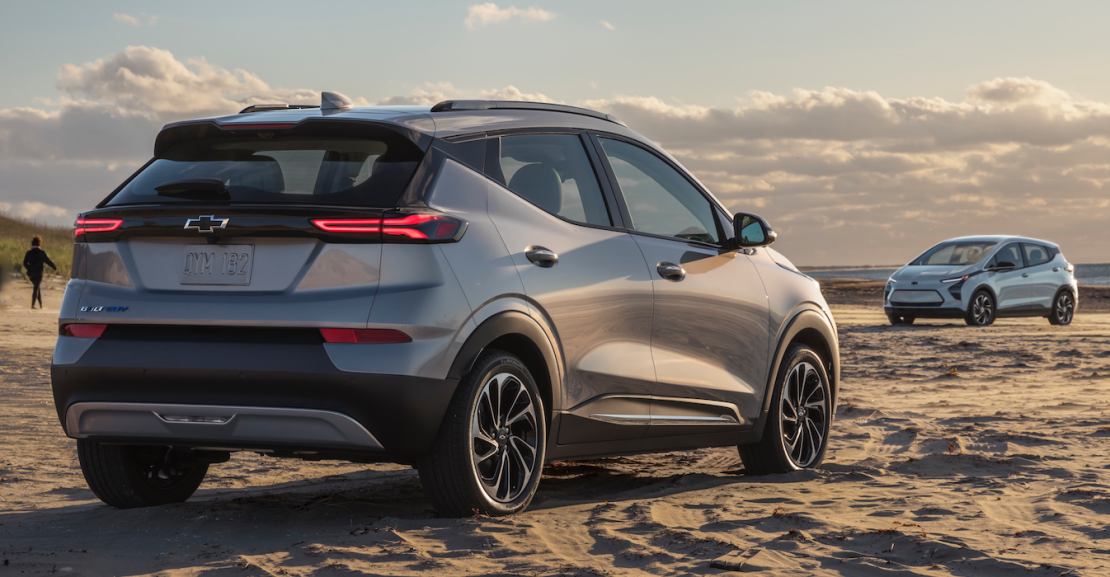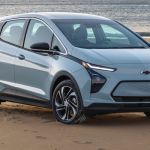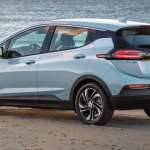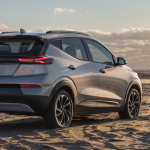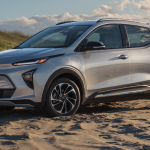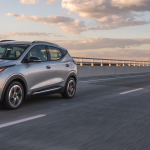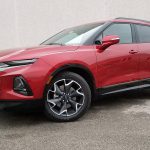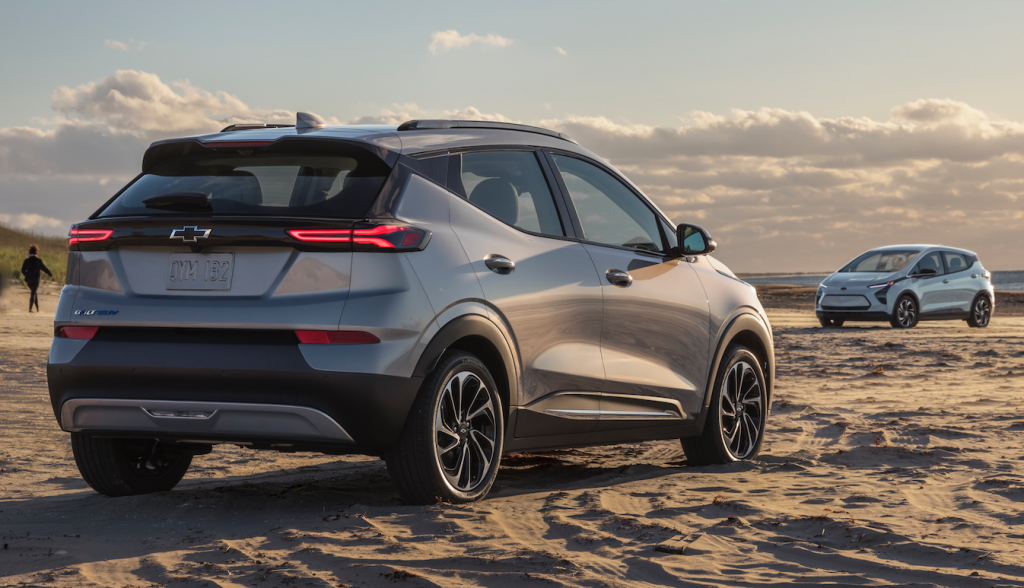
Today Chevrolet unveiled its redesigned-for-2022 Bolt EV electric vehicle, and also took the wraps off the Bolt EV’s all-new, SUV-like sibling: the 2022 Bolt EUV.
More electric-vehicle news and reviews
The Bolt EUV shares its powertrain and basic architecture with the Bolt EV, but it’s about 6 inches longer overall, which gives it 3 inches more legroom than the EV in the back seat. However, the EUV’s cargo room is not improved over the EV. It’s actually a shade less, measuring at 16.3 cubic feet behind the rear seat and 56.9 cu. ft. with the rear seat backs folded, compared to the EV’s respective measurements of 16.6 and 57.0 cubic feet.
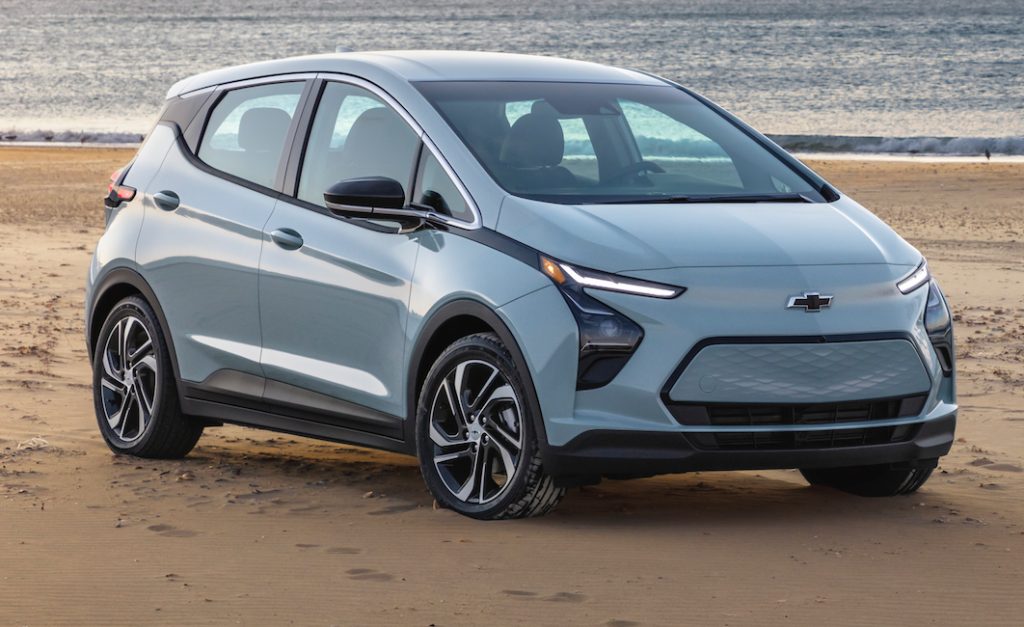
The Bolts’ all-electric powertrain is a single-motor drive unit that makes 200 horsepower. It has a 65 kWh lithium-ion battery that enables a Chevrolet-estimated driving range of 259 miles for the Bolt EV, and 250 miles for the slightly larger, heavier Bolt EUV.
The front-end design of both vehicles is highlighted by “high-eye” daytime running lamps (which also function as sequential turn signals) perched above the headlamps. Interior features include an 8-inch configurable digital gauge cluster, 10.2-inch infotainment touchscreen, and space-saving push-pull gear-selector buttons in place of a traditional shifter. A driver-selectable one-pedal driving mode increases regenerative braking to the degree that the driver can speed up, slow down, and come to a complete stop using only the accelerator pedal. Also included is a Regen on Demand feature, which enables the driver to initiate regenerative braking by pulling on a steering-wheel-mounted paddle.
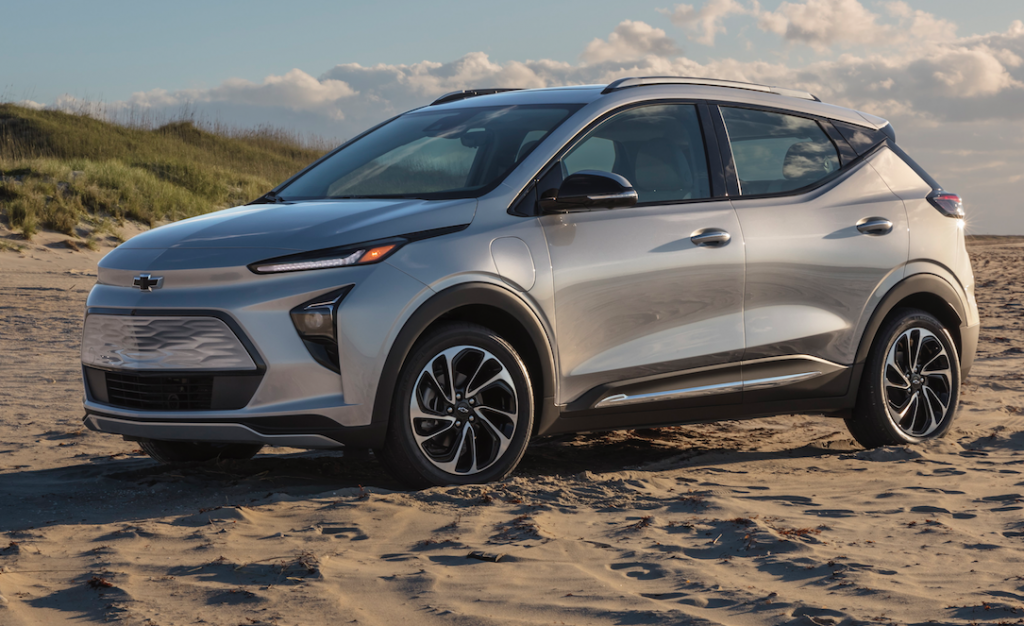
Heated/ventilated front seats and heated outboard seats are available on both Bolts, as are a 360-degree surround-view monitor, rearview-mirror camera display, wireless Apple CarPlay and Android Auto connectivity, 4G LTE Wi-Fi hotspot, and wireless charging.
The Bolt EUV is available with GM’s Super Cruise semi-autonomous hands-free driver-assistance system. It’s the first Chevrolet to offer the feature, which is currently offered only on select Cadillac models. The EUV gets the base version of Super Cruise—not the enhanced version offered at Cadillac, which includes hands-free lane-change capability.
DC fast-charging capability, which enables the Bolt EV to add up to 100 miles of driving range in 30 minutes of charging (up to 95 miles for the Bolt EUV), is standard. The myChevrolet smartphone app has an Energy feature that enables users to locate charging stations across the country to plan for a road trip. A Dual Level Charge Cord, which has a changeable plug that allows charging on a standard 120-volt three-prong outlet or a 240-volt outlet, is standard on the EUV and available on the EV. And, in partnership with EV home-charging company Qmerit, Chevrolet will cover the installation of Level-2 charging capability in the homes of eligible buyers/leasers of a Bolt EV or EUV.
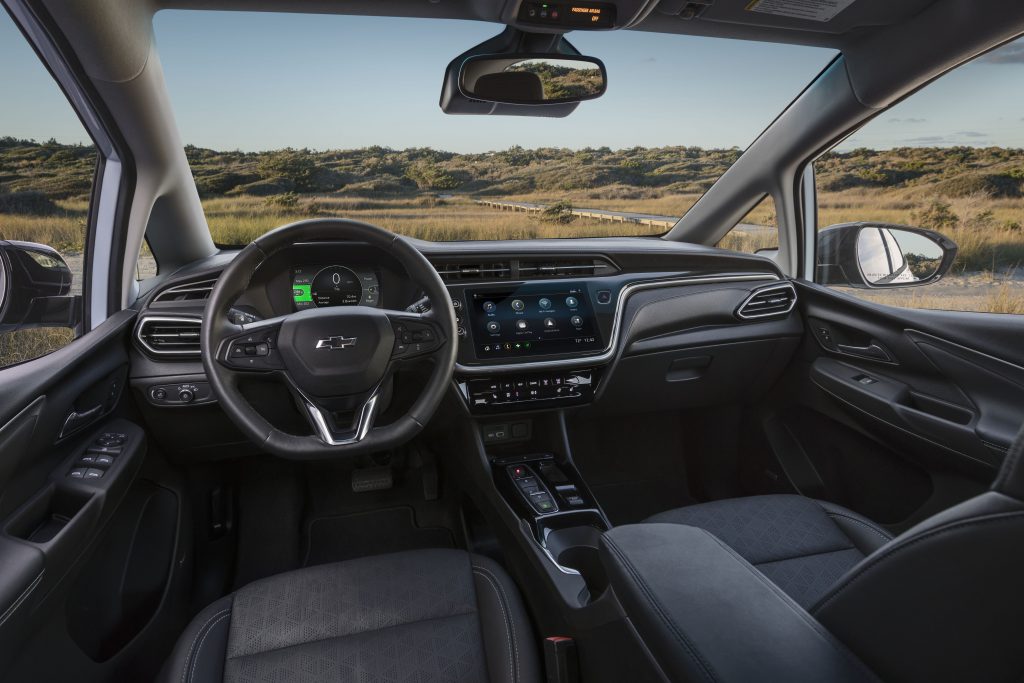
Both Bolts are slated to go on sale in all 50 states this summer. The Bolt EV starts at $31,995, and the Bolt EUV starts at $33,995 (both prices include destination). The Bolt EV’s sub-$32K base MSRP represents a price reduction of more than $5000 over the 2021 model. A limited-production Launch Edition version of the Bolt EUV, which includes Super Cruise, a panoramic sunroof, unique wheels, an illuminated charge port, and special badging, will start at $43,495. Even though the federal tax credit of $7500 is no longer offered on General Motors vehicles, there may be other state and local incentives that could lower the actual transaction price a bit more.
Hummer Is Back, And This Time It’s Electric
CG Says:
The redesigned Chevrolet Bolt EV and new Bolt EUV represent a further commitment to an all-EV future from General Motors, but neither vehicle feels like a full step forward at this point. The electric powertrain is essentially carryover technology, and the Bolt EUV isn’t radically different from its Bolt EV sibling. The EUV’s additional passenger room and added features are welcome enhancements that may nab customers who wouldn’t have considered a Bolt EV, but all-wheel drive is not on the menu, and even Chevrolet calls the EUV “SUV-like”—not an SUV—in its official press materials.
However, the pricing of both 2022 Bolts is very aggressive—even without a federal tax credit—and the other new features and enhancements should help these vehicles attract more first-time EV buyers and bridge the gap to when GM’s forthcoming, next-generation Ultium battery technology hits the market.
Listen to the Consumer Guide Car Stuff Podcast
2022 Chevrolet Bolt EV and 2022 Chevrolet Bolt EUV Gallery
(Click below for enlarged images)

